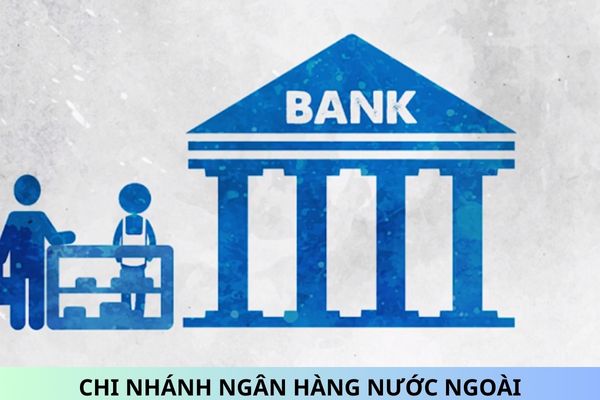Circular 31/2024/TT-NHNN Regulating the Classification of Assets in the Operations of Commercial Banks, Non-bank Credit Institutions, and Foreign Bank Branches
Circular 31/2024/TT-NHNN on the classification of assets in the operation of commercial banks, non-bank credit institutions, and branches of foreign banks
On June 30, 2024, the Governor of the State Bank of Vietnam issued Circular 31/2024/TT-NHNN on the classification of assets in the operation of commercial banks, non-bank credit institutions, and branches of foreign banks.
Circular 31/2024/TT-NHNN applies to:
- Commercial banks, non-bank credit institutions, branches of foreign banks.
- Branches of foreign banks are allowed to apply the risk provision policies of their foreign parent banks to classify debts, establish and use provisions to handle risks upon approval from the State Bank.
- Conditions, profiles, procedures, and sequences for approval of branches of foreign banks to apply the risk provision policies of their foreign parent banks are implemented according to regulations in the Decree on the establishment of risk provisions.
- For branches of foreign banks that have been approved by the State Bank to apply the risk provision policies of their foreign parent banks, based on the inspection, supervision, and evaluation results, if the State Bank evaluates that the risk provision policies of the foreign parent banks do not fully reflect the actual credit risk level in banking operations in Vietnam, the State Bank has the authority to require the branches of foreign banks to classify debts according to the regulations in Circular 31/2024/TT-NHNN.
Circular 31/2024/TT-NHNN is effective from July 1, 2024, and concurrently repeals Circular 11/2021/TT-NHNN on the classification of assets, the level of, and method for the establishment of risk provisions, and the usage of provisions to handle risks in the operations of credit institutions and branches of foreign banks.
*Under the Credit Institutions Law 2024:
- A commercial bank is a type of bank that conducts all banking and other business activities as regulated by this Law for profit purposes.
- A non-bank credit institution is a credit institution that conducts one or several banking activities as regulated by this Law, excluding the acceptance of deposits from individuals and the provision of payment services through customer accounts. Types of non-bank credit institutions include general finance companies and specialized finance companies.
- A branch of a foreign bank is an economic organization without legal status and is a dependent unit of a foreign bank, guaranteed by the foreign bank to be responsible for all obligations and commitments of the branch in Vietnam.

Circular 31/2024/TT-NHNN on the classification of assets in the operation of commercial banks, non-bank credit institutions, branches of foreign banks? (Image from the Internet)
What principles should the internal credit rating system be built on?
According to Article 5 of Circular 31/2024/TT-NHNN, the internal credit rating system is regulated as follows:
Internal Credit Rating System
- The internal credit rating system includes:
a) Financial and non-financial indicators, evaluation procedures for the repayment and payment capacity of customers based on both qualitative and quantitative financial aspects, business conditions, management, reputation of customers, including customers that are restricted from credit granting; information about related persons of customers restricted from credit granting;
b) Rating methods for different customer groups.
2. The internal credit rating system must be built on the following principles:
a) Built based on data and information of all customers collected for at least 1 (one) consecutive year prior to the year of building the internal credit rating system;
b) At least once a year, the internal credit rating system must be reviewed and evaluated based on data and customer information collected during the year; banks, non-bank credit institutions must amend and supplement the internal credit rating system (if necessary);
c) Have ratings corresponding to the level of risks from low to high;
d) Approved for application by the Board of Directors, Board Members (for commercial banks, non-bank credit institutions), General Director or Director (for branches of foreign banks).
- Commercial banks, branches of foreign banks must build an internal credit rating system to periodically rate customers and as required, as a basis for credit approval, credit quality management, and the establishment of suitable risk provision policies with the scope of operations, customers, and actual situation of the commercial bank or branch of the foreign bank.
Non-bank credit institutions are not required to have an internal credit rating system. In case a non-bank credit institution builds an internal credit rating system, it must comply with the regulations of this Circular.
...
Thus, the internal credit rating system must be built on the following principles:
- Built based on data and information of all customers collected for at least 1 (one) consecutive year prior to the year of building the internal credit rating system;
- At least once a year, the internal credit rating system must be reviewed and evaluated based on data and customer information collected during the year; banks, non-bank credit institutions must amend and supplement the internal credit rating system (if necessary);
- Have ratings corresponding to the level of risks from low to high;
- Approved for application by the Board of Directors, Board Members (for commercial banks, non-bank credit institutions), General Director or Director (for branches of foreign banks).
What minimum requirements must internal regulations on credit granting and debt management meet?
According to Clause 2, Article 6 of Circular 31/2024/TT-NHNN, the minimum requirements for internal regulations on credit granting and debt management include:
- Built based on information and data of collected customers, and the results of customer ratings according to the internal credit rating system;
- Applied uniformly and consistently throughout the system, as a basis for evaluating, approving credit granting, and managing debt for specific customers;
- Have policies for customer credit, including regulations on credit conditions, credit limits, interest rates, profiles, sequences, procedures, evaluation, approval for credit granting, debt management;
- Have management regulations to ensure compliance with the State Bank’s regulations on limits, safety ratios in the operations of banks, non-bank credit institutions;
- Have regulations on the responsibilities and powers of units and individuals in evaluating, approving credit granting, managing credit quality, managing security assets;
- Have regulations on the procedures, contents of inspection and control before, during, and after credit granting;
- Have regulations on security measures, evaluation, and management of security assets;
- Have regulations on the valuation of security assets, including principles, periodicity, methods, processes, and responsibilities of units, individuals involved in asset valuation according to legal regulations to ensure the value of security assets is suitable with market value when calculating the specific provision amount according to the Decree on the establishment of risk provisions;
- Have regulations on debt recovery measures.










